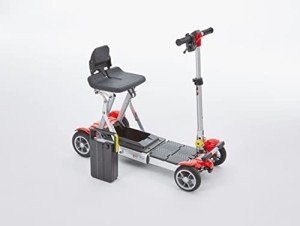5 Facts Mobility Devices Is Actually A Positive Thing
Understanding Mobility Devices: Enhancing Independence and Quality of Life
In today's hectic world, the desire for mobility is universal. Nevertheless, particular medical conditions or age-related obstacles can hinder motion, resulting in a continuous look for help. Mobility devices function as vital tools to enhance independence, enhance lifestyle, and enable people to engage fully in their neighborhoods. This short article offers a detailed overview of mobility devices, including their types, functions, choice criteria, and more.
Types of Mobility Devices
Mobility devices vary from basic aids to complex devices, tailored to meet various needs. Below is a table summing up common types of mobility devices:
Type of Device
Description
Perfect For
Walkers
Four-legged support devices that supply superior stability while walking.
People requiring extra support.
Walking sticks
Single or three-legged sticks that enhance balance and support walking.
Those with small mobility difficulties.
Wheelchairs
Seats mounted on wheels, available in handbook and electric versions.
Individuals with limited or no mobility.
Scooters
Electric cars created for outside use and ease of navigation.
Those who can't walk cross countries.
Crutches
Devices that help individuals move weight away from a hurt leg.
People recovering from leg injuries.
Rollators
Walkers with wheels, seats, and brakes for improved mobility.
Users needing rest options while strolling.
Lift Chairs
Reclining chairs that help users in standing up and taking a seat.
Seniors or those with mobility restrictions.
Mobility Scooters
Small electric lorries for minimal mobility, often utilized outdoors.
People requiring support over fars away.
Key Features of Mobility Devices
When selecting a mobility device, a number of key features should be thought about to guarantee optimal functionality and ease of usage:
- Weight Capacity: Understanding the device's weight constraint is essential for security and efficiency.
- Adjustability: Devices ought to be adjustable in height and width to fit the user conveniently.
- Portability: Lightweight and foldable choices are necessary for users who travel or need transport.
- Stability and Safety: Look for features like anti-tip wheels and durable structures to boost safety.
- Reduce of Use: Simple mechanisms and easy to use styles can make a substantial difference in daily use.
- Convenience: Ergonomic designs and padded seats can boost the user experience.
Choosing the Right Mobility Device
Picking the ideal mobility gadget can be a daunting task. Here are some steps to direct the decision-making procedure:
- Assess Needs: Evaluate the individual's mobility difficulties and day-to-day activities.
- Speak with a Professional: Engage health care specialists who can provide suggestions based on the individual's physical condition.
- Trial Options: If possible, trial different devices to identify comfort and performance.
- Evaluation Budget: Consider the cost of the gadget, consisting of any extra functions or modifications required.
- Research Options: Determine the very best brand names and designs by reading reviews and comparisons.
Table: Comparative Analysis of Popular Mobility Devices
Device
Benefits
Disadvantages
Walkers
Excellent stability, promotes walking.
Large, may restrict movement in small spaces.
Walking canes
Lightweight, improves balance.
May not offer enough assistance for severe mobility problems.
Wheelchairs
Suitable for those with significant mobility restrictions.
Can be cumbersome, specifically in indoor environments.
Scooters
Great for outdoor use, simple to maneuver.
Restricted indoor functionality, much heavier.
Rollators
Supplies rest choice, easy to move.
May require more area than conventional walkers.
Lift Chairs
Comfortable, helps transition from sitting to standing.
More pricey, larger footprint.
Frequently Asked Questions (FAQs)
1. What is a mobility device?
A mobility gadget is any tool developed to assist individuals in moving and browsing their environment. This includes walkers, wheelchairs, scooters, and crutches.
2. How do I understand which mobility device is best for me?
Consider your specific mobility obstacles, physical capabilities, and lifestyle requirements. Consulting with health care professionals can likewise provide tailored recommendations.
3. Are mobility devices covered by insurance?
Numerous insurance coverage strategies, consisting of Medicare, may cover specific mobility devices. It's important to contact your insurance coverage company for specific protection details.
4. Can I rent a mobility device instead of buying one?
Yes, lots of medical supply stores and pharmacies provide leasings for mobility devices. disabled scooters is helpful for people with momentary mobility problems.
5. How can I keep my mobility device?
Routine maintenance is vital. It includes cleaning up the gadget, inspecting for wear and tear, and guaranteeing all parts are working correctly.
The Impact of Mobility Devices on Quality of Life
Mobility devices significantly enhance the lifestyle for people with limited mobility. They promote independence, motivate social interaction, and boost access to vital services and leisure activities.
- Increased Independence: Users can navigate their areas, attend occasions, and engage in pastimes without depending on others.
- Social Engagement: Mobility devices assist in participation in celebrations, thereby combating sensations of seclusion.
- Boosted Safety: Devices offer stability and lower the threat of falls, promoting user self-confidence.
Mobility devices are more than simply tools for motion; they are gateways to self-reliance and quality living. By comprehending the different kinds of mobility aids available, their key features, and factors to consider for picking the ideal gadget, individuals can make educated decisions about their mobility needs. Ultimately, the ideal mobility gadget can cause a more active, fulfilling life. Whether it's a walker, wheelchair, or scooter, the right choice contributes significantly to improving the mobility and independence of users.
